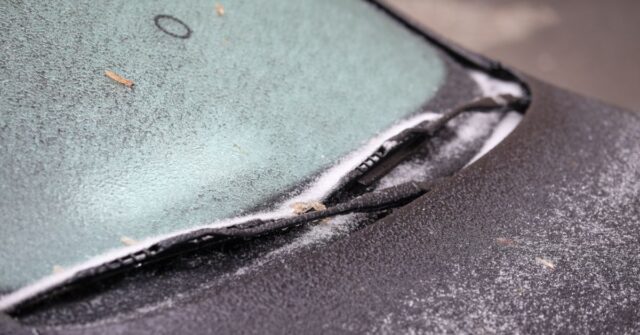Windscreen care is a vital aspect of maintaining your vehicle, especially during the rainy season.
With the unique conditions that the wet weather in Australia brings, understanding how to properly care for your windscreen can ensure safer driving and extend the life of your windscreen.
This guide aims to cover everything you need to know about windscreen care during Australia’s rainy season.
Understanding Australia’s Rainy Season
The rainy season in Australia presents unique challenges for vehicle maintenance, particularly for windscreen care.
This section of the guide explores these challenges and how they impact your windscreen maintenance routine.
The Unique Challenges of the Rainy Season
The wet weather of the rainy season not only increases the need for clear visibility but also exposes your windscreen to a host of potential issues.
Heavy rainfall, storms, high winds, and falling debris can all lead to windscreen damage. Furthermore, fluctuating temperatures can cause windscreens to expand and contract, potentially leading to cracks.
Seasonal Changes and Their Impact on Windscreen Maintenance
Seasonal changes in Australia are significant, and their impact on windscreens should not be overlooked.
The shift from dry to wet conditions requires changes in how you care for your windscreen. Increased humidity can also lead to issues like fogging, requiring effective defogging solutions and strategies.
The Importance of Windscreen Care
Windscreen care is critical for the safety of drivers and passengers alike. In this section, we delve into the reasons why proper windscreen maintenance is crucial.
The Role of Windscreens in Driver Safety
The windscreen serves as a barrier between the driver and the elements, as well as being a vital component of the vehicle’s structural integrity.
It also contributes to clear visibility, which is essential for safe driving. Poorly maintained or damaged windscreens can compromise these functions and pose a significant safety risk.
Preventing Damage and Maintaining Visibility
Regular and proper windscreen maintenance can help prevent damage, prolong the life of your windscreen, and maintain optimal visibility.
This includes regular cleaning, prompt repair of chips and cracks, and using appropriate windscreen treatments.
Pre-Rainy Season Windscreen Preparation
Preparation is key when it comes to taking care of your windscreen in the rainy season. This section will guide you through the necessary steps to prepare your windscreen for Australia’s rainy season.
Professional Windscreen Inspection
Consider getting a professional windscreen inspection before the rainy season hits. Professionals can spot any existing or potential issues that could worsen under rainy conditions.
They can also offer guidance on any treatments or repairs that might be needed.
Cleaning and Polishing Your Windscreen
Ensuring your windscreen is clean and polished can improve visibility during the rainy season. Polishing the glass can also help to fill minor scratches and prevent them from developing into larger cracks.
Use a high-quality auto glass cleaner and microfibre cloth for the best results.
Sealing and Windscreen Treatments
There are various windscreen treatments available that can enhance visibility in the rainy season.
Hydrophobic treatments, for instance, cause water to bead up and quickly slide off the glass, improving visibility in wet weather.
Ensure any small chips are sealed to prevent further damage from the increased moisture.
Essential Windscreen Maintenance During the Rainy Season
Proactive and regular maintenance during the rainy season is crucial to ensure your windscreen stays in top condition.
Here, we’ll discuss routine cleaning, the importance of using appropriate wiper blades, and how to deal with fogging.
Routine Cleaning
Regular cleaning is essential during the rainy season, not just for clear visibility but also to prevent dirt and debris from scratching the glass.
Use a high-quality glass cleaner and a microfibre cloth to clean your windscreen gently and thoroughly.
Using Appropriate Wiper Blades
Good quality wiper blades are critical for maintaining visibility during heavy rainfall. Check your wiper blades regularly for any signs of wear and tear and replace them if needed.
Remember that rubber blades usually need to be replaced every six to twelve months.
Dealing with Fogging
Fogging is a common issue during the rainy season. Make sure your vehicle’s defogging system is functioning properly.
Consider using anti-fog treatments on the inside of your windscreen. Crack your windows slightly to improve air circulation if needed.
Tackling Common Rainy Season Windscreen Issues
The rainy season can bring several windscreen issues, from leaks to damage from falling debris. This section will help you manage these common problems effectively.
Managing Leaks and Seepage
Windscreen leaks can lead to interior damage and can also be a driving hazard. Regularly check the edges of your windscreen for signs of water seepage.
If you notice any leaks, consider having them professionally sealed as soon as possible.
Addressing Damage from Falling Debris
High winds and storms can cause debris like branches and rocks to strike your windscreen, leading to chips and cracks.
If this happens, seek professional help to assess the damage. Many chips and cracks can be repaired if addressed early, preventing the need for a full windscreen replacement.
Repairing Chips and Cracks Promptly
Chips and cracks are common windscreen issues during the rainy season. If not addressed promptly, water can seep into these cracks, worsening the damage.
It’s advisable to have any chips or cracks repaired by professionals as soon as you notice them.
Post-Rainy Season Windscreen Care
Once the rainy season is over, it’s crucial to address any toll it may have taken on your windscreen.
This section will guide you through post-season inspection and maintenance, and how to address rain damage.
Post-Season Inspection and Maintenance
After the rainy season, it’s advisable to get your windscreen inspected for any unseen damage.
Regular maintenance should continue, including thorough cleaning and checking the windscreen for new chips or cracks. This will help ensure your windscreen is in good shape for the coming seasons.
Addressing Rain Damage
Any damage caused by the rain, such as seal deterioration or water spots, should be addressed as the season ends.
If you notice water spots, use a quality water spot remover to clean your windscreen. For seal damages, seek professional help for repair or replacement.
Using Professional Windscreen Services
While regular maintenance can be done by yourself, some issues need professional attention.
Here, we will discuss when to seek professional help and how to select a trustworthy windscreen service provider.
When to Seek Professional Help
If you notice significant issues like large cracks, leaks, or seal deterioration, it’s time to seek professional help.
Also, if your windscreen has suffered damage from debris or if minor cracks and chips don’t improve with basic at-home repair kits, professional service is advisable.
Selecting a Trustworthy Windscreen Service Provider
Choosing a reliable and experienced windscreen service provider is key. Look for providers with positive reviews, a good reputation in your community, and a range of services.
They should also be able to provide clear and upfront information about costs.
Additional Tips and Resources
There are additional aspects of windscreen care in the rainy season to consider, including insurance and useful products. This section will provide further guidance.
Insurance and Windscreen Coverage
Check your vehicle insurance policy to understand what windscreen repairs and replacements are covered.
Some policies offer full coverage for windscreen repairs without affecting your no-claims bonus. Ensure your policy is adequate for your needs.
Helpful Products for Rainy Season Windscreen Care
Various products can aid in windscreen care during the rainy season.
Hydrophobic treatments can improve visibility in the rain, while high-quality glass cleaners and microfibre cloths can keep your windscreen clean. Anti-fog treatments can also be beneficial.
Staying Safe on the Roads in the Rainy Season
Ultimately, windscreen care is a crucial part of staying safe on the roads during the rainy season.
Maintain clear visibility, address any issues promptly, and don’t hesitate to seek professional help when needed. Safety should always be your top priority.





